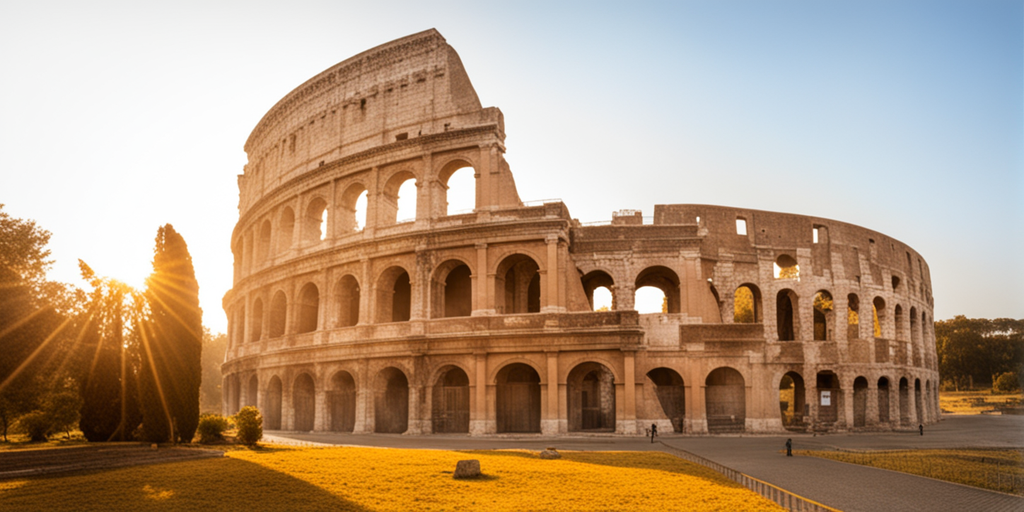The Colosseum: Unveiling the Magnificent Architectural Marvel of Ancient Rome
- Home
- Blog

Journey back to ancient Rome and explore the remarkable grandeur of the Colosseum. This iconic amphitheater, a symbol of Roman engineering brilliance, stands as a testament to the empire’s architectural prowess and enduring legacy.
Architectural Brilliance
Erected between 70-80 AD in the Flavian era, the Colosseum, or Flavian Amphitheatre, showcases an ingenious construction method blending concrete, limestone, and brick. Its colossal elliptical structure sprawls across 6 acres, towering four stories high, accommodating an estimated 50,000 to 80,000 spectators.
Design and Layout
The Colosseum’s elliptical layout facilitates efficient crowd movement, featuring an intricate network of corridors, staircases, and tiered seating. The central arena, hosting gladiator battles and various spectacles, epitomizes the versatility of this architectural marvel.
Distinguished by its arches, columns, and tiers, the exterior façade exudes architectural sophistication. The incorporation of Doric, Ionic, and Corinthian columns portrays Roman architectural finesse and aesthetic detail.
Innovative Construction Techniques
Pioneering engineering techniques, including groundbreaking use of concrete, underscore the Colosseum’s construction. A web of arches and vaults supports the immense structure, showcasing ancient Roman mastery in load-bearing architecture.
Advanced engineering strategies involving pulley systems and ramps facilitated the Colosseum’s assembly, highlighting the ingenuity and advanced construction methodologies prevalent in ancient Rome.
Cultural Significance
Serving as the nucleus of Roman entertainment, the Colosseum witnessed gladiatorial contests, simulated naval battles, and public exhibitions that enthralled ancient Roman society. Beyond its entertainment value, it symbolizes Rome’s power, architectural eminence, and societal hierarchy.
Designated a UNESCO World Heritage Site, the Colosseum stands as an enduring testament to Rome’s historic narrative and architectural brilliance. Drawing millions of visitors annually, it continues to captivate with its timeless splendor and cultural significance.
Conclusion:
The Colosseum remains an architectural gem that transcends time, preserving the legacy of ancient Roman engineering and vision. Its monumental presence and historical relevance offer a glimpse into an era of architectural innovation, leaving an indelible mark on history.
Strolling through its corridors and beholding its majestic walls, we connect with a bygone era, acknowledging the grandeur and innovation that defined ancient Rome.
As you immerse yourself in the Taj Mahal’s majesty, you witness not just an architectural wonder but a celebration of love’s enduring legacy, perpetuated through the ages.

